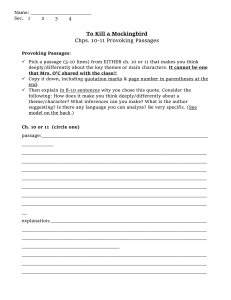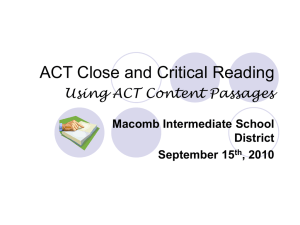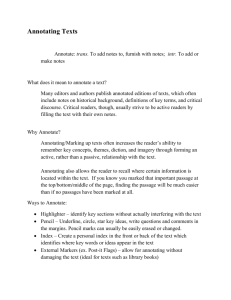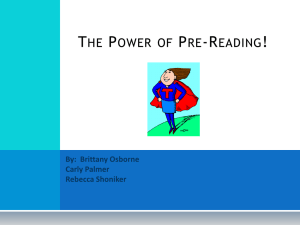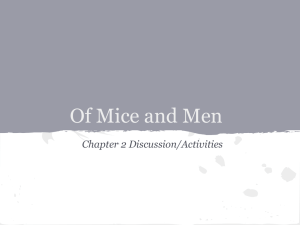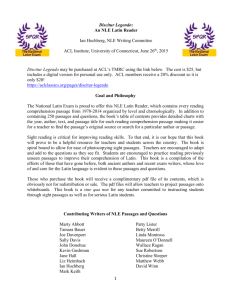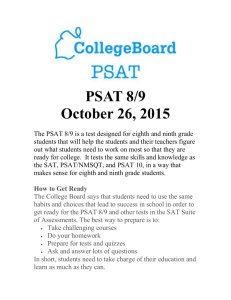Mockingbird annotation PP
advertisement
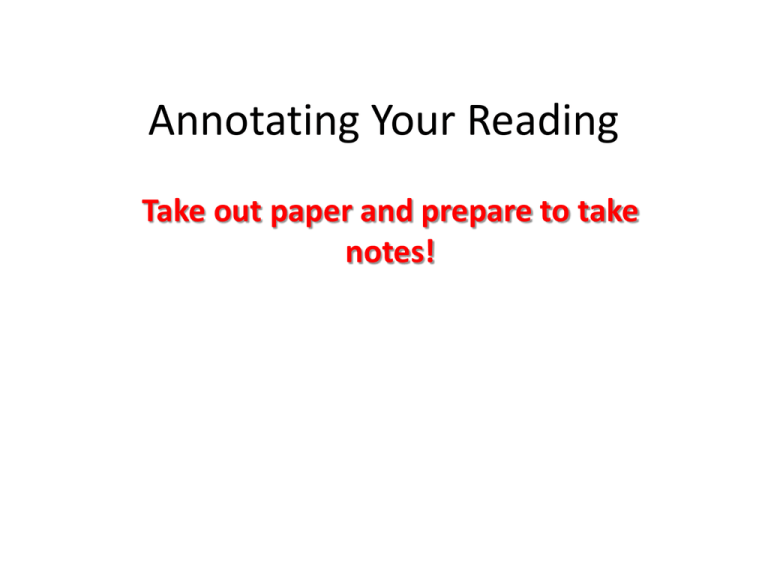
Annotating Your Reading Take out paper and prepare to take notes! What do I do? • As you read, choose passages that stand out to you and make note of them (ALWAYS include page numbers). • Write your response to the text. These could be insights you have about what is going on in the story, questions, reflections, or identification of some kind of literary technique. CHOOSING PASSAGES FROM THE TEXT: When deciding what to make note of, look for quotes that seem significant, powerful, thought provoking or puzzling. For example, you might make not of: 1. 2. Use of stylistic or literary devices Passages that remind you of something you’ve seen earlier in the book or in another reading 3. Shifts or turns in the plot 4. A passage that makes you realize something you hadn’t seen before 5. Examples of patterns: recurring images, ideas, colors, symbols or motifs. 6. Passages with confusing language or unfamiliar vocabulary 7. Events you find surprising or confusing 8. Passages that say something about a particular character or setting 9. Make connections between different characters or events in the text 10. Analyze a passage and its relationship to the story as a whole Example Maycomb was an old town, but it was a tired old town when I first knew it. In rainy weather the streets to red slop . . . I might annotate this passage becauseturned there is an [s]omehow itALLUSION was hotter then . . . isbony mules in it. The narrator alluding to, or hitched making to Hoover carts flicked flies in the sweltering shade of the live a reference to president Roosevelt’s speech: “We oaks on the square. Men’s stiffbutcollars wilted by us nine in the have nothing to fear fear itself.” This lets know that thebefore story takes place during great morning. Ladies bathed noon, after the their three-o’clock naps, and by nightfall were depression. like soft teacakes with frostings of sweat and sweet talcum. . . . There was no hurry, for there was might annotate this passage because it describes nowhere Ito go, nothing to buy and no money to buy it with, of Maycomb. The narrator shows the nothing tothe seetown outside the boundaries of Maycomb County. reader that it was “tired” and “old.” We also notice But it was a time of vague optimism for some of the people: that the streets are not paved (“red slop”) and that Maycomb County had recently been told that itit had nothing to I might annotate this passage because “Hoover carts” which point to the fact that fear but there fear are itself. has figurative language. The narrator this is not a wealthy town. uses a simile to compare the women to “soft teacakes with frostings of sweat and talcum” Example #2 – Why is this important? “I told Calpurnia to just wait, I'd fix her: one of these days when she wasn't looking I'd go off and drown myself in Barker's Eddy and then she'd be sorry. Besides, I added, she'd already gotten me in trouble once today: she had taught me to write and it was all her fault." Who usually teaches a child to read (besides a teacher)? What does this reveal about Calpurnia’s relationship with tis family? What race is Calpurnia? Your Assignment: • In groups of 3-4 you will… • Read chapter Five together – you may designate one reader or you can take turns, but you must read ALOUD. • Find THREE things to annotate and explain your choices. • Make sure this is analysis – don’t just pick randomly. Your group will be asked to share their findings with the class.
